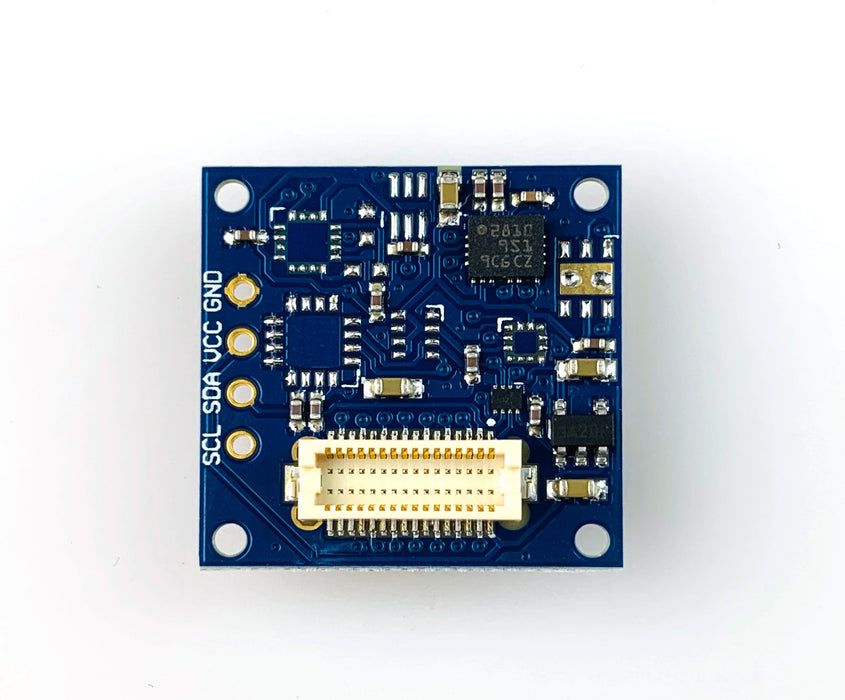
9-Axis IMU TinyShield
DESCRIPTION
This TinyShield lets you measure 9 degrees of freedom (9DOF) with your TinyDuino and features the ST LSM9DS1 - a system-in-package featuring a 3D digital linear acceleration sensor, a 3D digital angular rate sensor, and a 3D digital magnetic sensor.
The LSM9DS1 has a linear acceleration full scale of ±2g/±4g/±8/±16 g, a magnetic field full scale of ±4/±8/±12/±16 gauss and an angular rate of ±245/±500/±2000 dps.
The 9 Axis TinyShield incorporates level shifters and a local power supply to ensure proper and safe operation over the entire TinyDuino operating voltage range up to 5V.
To learn more about the TinyDuino Platform, click here
TECHNICAL DETAILS
To see what other TinyShields this will work with or conflict with, check out the TinyShield Compatibility Matrix
ST LSM9DS1 9-Axis DOF Specs
- 3 acceleration channels, 3 angular rate channels, 3 magnetic field channels
- ±2/±4/±8/±16 g linear acceleration full scale
- ±4/±8/±12/±16 gauss magnetic full scale
- ±245/±500/±2000 dps angular rate full scale
- 16-bit data output
- “Always-on” eco power mode down to 1.9 mA
- Embedded temperature sensor
- Embedded FIFO
- Position and motion detection functions
- Click/double-click recognition
TinyDuino Power Requirements
- Voltage: 3.0V - 5.5V
- Current: 4.6mA (Normal Mode). Due to the low current, this board can be run using the TinyDuino coin cell option
Pins Used
- A5/SCL - I2C Serial Clock line
- A4/SDA - I2C Serial Data line
Dimensions
- 20mm x 20mm (.787 inches x .787 inches)
- Max Height (from lower bottom TinyShield Connector to upper top TinyShield Connector): 5.11mm (0.201 inches)
- Weight: 1 gram (.04 ounces)
Notes
- You can also use this shield without the TinyDuino – there are 0.1″ spaced connections for power, ground, and the two I2C signals along the side of the TinyShield to allow you to connect a different system. Warning: Revision 4 boards have a mistake on the silkscreen, the pin marked VCC is actually SCL, the pin marked SCL is actually SDA, and the pin marked SDA is actually VCC. If you connect this up the way it is marked you will not damage the board.
Downloads
- ST LSM9DS1 product page
- Datasheet
- Schematic
- Eagle Files
- Sample Arduino code
- Arduino Library Download


